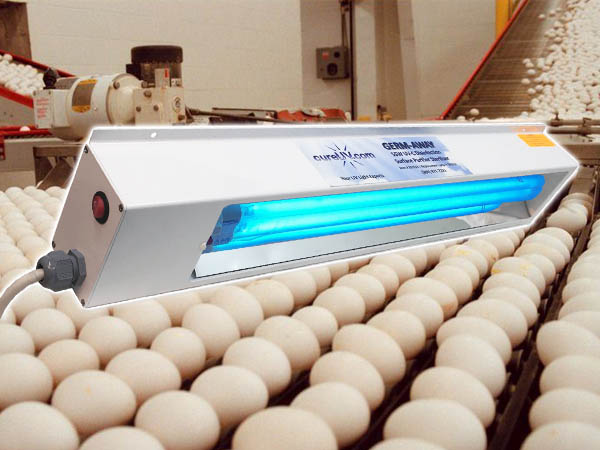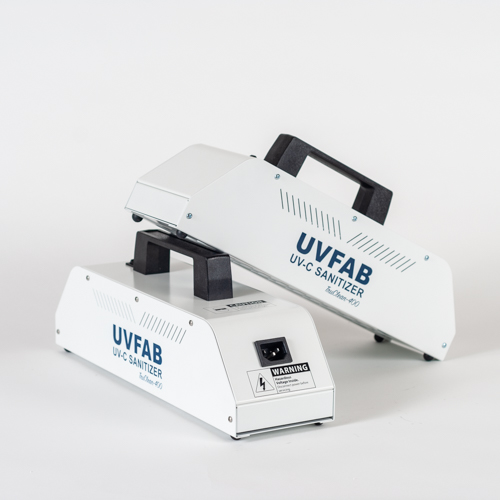Taking advantage of the Power of UV Surface Disinfection: A Comprehensive Guide for Healthier Spaces
Taking advantage of the Power of UV Surface Disinfection: A Comprehensive Guide for Healthier Spaces
Blog Article
UV Disinfection: The Cutting-Edge Technology Transforming Cleanliness Practices
In the world of sanitation techniques, one technology has emerged as a game-changer: UV disinfection. With its capability to get rid of damaging microorganisms, this sophisticated modern technology is reinventing the way we come close to tidiness and health. Yet how does UV sanitation job, and what are the benefits it uses? From health care settings to food processing, UV disinfection is making its mark in various industries. In this discussion, we will check out the details of this transformative innovation and look in advance to its promising future.
Just How UV Disinfection Works
UV disinfection functions by making use of ultraviolet light to ruin or inactivate microbes, offering a chemical-free and very efficient approach of cleanliness. This modern technology harnesses the power of short-wavelength UV-C light, which can harming the DNA and RNA of microbes, thus providing them incapable to create and reproduce injury.
The process starts with the installment of UV sanitation systems, which include UV lights that give off UV-C light. These lamps are strategically put in areas where microbial contamination is a problem, such as water therapy plants, medical facilities, research laboratories, and food handling facilities.
When microorganisms are exposed to UV-C light, the photons permeate their cell wall surfaces and reach the DNA and RNA within. The high-energy UV-C photons disrupt the genetic product by creating bonds between adjacent nucleotides, resulting in the development of thymine dimers. These dimers protect against the microbes from replicating, rendering them safe.
UV disinfection is very reliable versus a variety of microbes, consisting of parasites, bacteria, and viruses. It is especially reliable versus waterborne microorganisms like E. coli, Giardia, and Cryptosporidium. Moreover, UV disinfection is a chemical-free approach, eliminating the need for possibly dangerous disinfectants and reducing the risk of unsafe disinfection by-products.
Benefits of UV Sanitation
UV disinfection provides numerous benefits in the field of hygiene, making it a very favored approach for efficiently getting rid of damaging microorganisms. Among the key advantages of UV sanitation is its capability to give a chemical-free remedy. Unlike conventional sanitation methods that depend on chemicals, UV disinfection utilizes ultraviolet light to ruin the DNA of microbes, making them unable to reproduce and cause infections. This not just eliminates the need for potentially harmful chemicals but also lowers the threat of chemical residue on surfaces.

UV disinfection is likewise extremely versatile in its applications. It can be made use of in various setups, including healthcare facilities, schools, food handling facilities, and water treatment plants. UV disinfection systems can be easily incorporated into existing cleanliness practices, offering an extra layer of security against contagious illness.
Along with its effectiveness and convenience, UV disinfection is additionally eco-friendly. It does not generate any type of harmful by-products or residues, making it a safe and sustainable method for sanitation - uv surface disinfection. UV disinfection calls for very little maintenance and has a long life-span, resulting in cost savings in the lengthy run.
UV Sanitation in Medical Care Settings
In healthcare setups, UV disinfection has become an innovative approach for properly getting rid of harmful microbes. Making use of UV light to decontaminate surface areas and tools has actually acquired appeal due to its ability to offer an extra layer of defense against pathogens. UV disinfection functions by emitting ultraviolet light at a details wavelength that is dangerous to bacteria, infections, and various other microorganisms. This modern technology provides numerous benefits in healthcare setups.
First of all, UV disinfection is a non-chemical method, making it an environmentally pleasant choice contrasted to typical sanitation methods that commonly include using rough chemicals. The use of UV light removes the demand for chemical anti-bacterials, lowering the risk of harmful residue or chemical exposure to both people and healthcare employees.
Additionally, UV sanitation is very reliable advice in killing a large range of microbes, consisting of drug-resistant germs such as MRSA and C. difficile. It provides a trustworthy and regular disinfection procedure, ensuring that all surface areas and equipment are extensively sanitized, even in hard-to-reach locations.

UV Disinfection in Food Handling
The application of UV sanitation expands past medical care setups and finds substantial value in the world of food processing. uv surface disinfection. UV sanitation modern technology is becoming progressively prominent in the food market as a result of its capability to effectively eliminate harmful virus and improve food safety and security
One of the major benefits of UV disinfection in food handling is its capability to target a vast array of microorganisms, consisting of viruses, molds, and microorganisms. By utilizing UV light at certain wavelengths, it is feasible to interfere with the DNA and RNA of these pathogens, making them not able to site here duplicate or trigger harm. This innovation can be used to various stages of the food handling chain, consisting of surface disinfection, tools sterilization, and water therapy.
UV sanitation supplies a chemical-free and non-thermal technique of disinfecting food products. Unlike traditional disinfection methods that depend on chemicals or warmth, UV modern technology does not leave any kind of residue or change the preference, structure, or dietary worth of the food. This makes it an optimal service for sectors that need stringent adherence to high quality standards.
Furthermore, UV sanitation systems are simple to run and mount, needing minimal upkeep. They can be incorporated right into existing handling lines without creating substantial disruptions to the production procedure. Furthermore, UV systems have a fast therapy time, permitting continual processing and decreasing downtime.
The Future of UV Disinfection

One area where UV sanitation is anticipated to make considerable improvements is in the area of health care. With the surge of antibiotic-resistant germs and the need for a lot more effective disinfection methods, UV light has the possible to play a crucial function in lowering healthcare-associated infections. UV disinfection systems can be utilized to decontaminate surfaces, tools, and also the air in health care centers, assisting to avoid the spread of harmful microorganisms and enhance individual safety and security.
One more sector that could gain from innovations in UV sanitation modern technology is the food sector. UV light has currently verified to be a reliable approach for decontaminating food items and minimizing the danger of foodborne have a peek at these guys illnesses. As technology boosts, we can anticipate to see more effective and affordable UV sanitation systems being carried out in food handling plants, making certain that the food we take in is safe and without harmful germs.
Final Thought
In conclusion, UV sanitation is an innovative technology that is transforming hygiene practices in health care settings and food processing. By making use of UV light to eliminate or deactivate bacteria, it supplies numerous benefits such as efficiency, safety, and effectiveness. With ongoing developments in this area, UV sanitation holds terrific prospective for the future of cleanliness, supplying a sustainable and trusted solution for keeping clean and sanitary atmospheres.
UV disinfection is a chemical-free method, eliminating the need for possibly unsafe disinfectants and reducing the risk of dangerous disinfection spin-offs.
Unlike traditional disinfection methods that depend on chemicals, UV sanitation makes use of ultraviolet light to ruin the DNA of microbes, making them not able to duplicate and cause infections. Unlike conventional disinfection approaches that count on chemicals or warmth, UV innovation does not leave any kind of residue or alter the preference, structure, or dietary value of the food. As technology enhances, we can anticipate to see much more efficient and economical UV sanitation systems being carried out in food handling plants, guaranteeing that the food we consume is risk-free and totally free from dangerous germs.
In conclusion, UV sanitation is an advanced modern technology that is transforming cleanliness techniques in medical care setups and food handling.
Report this page